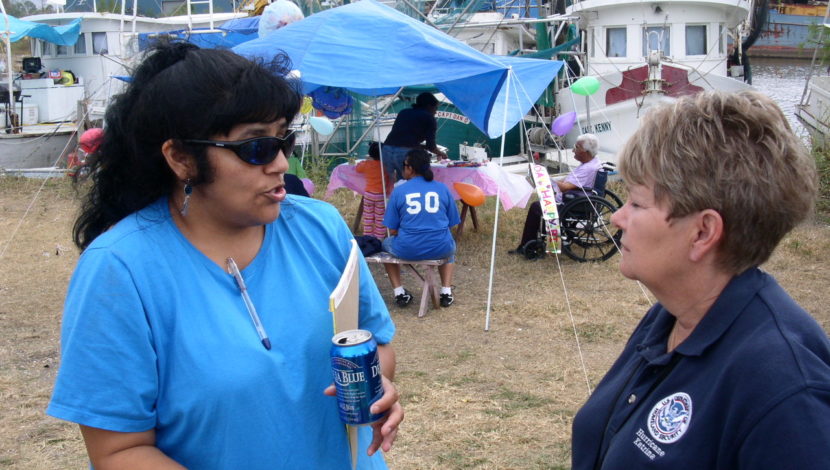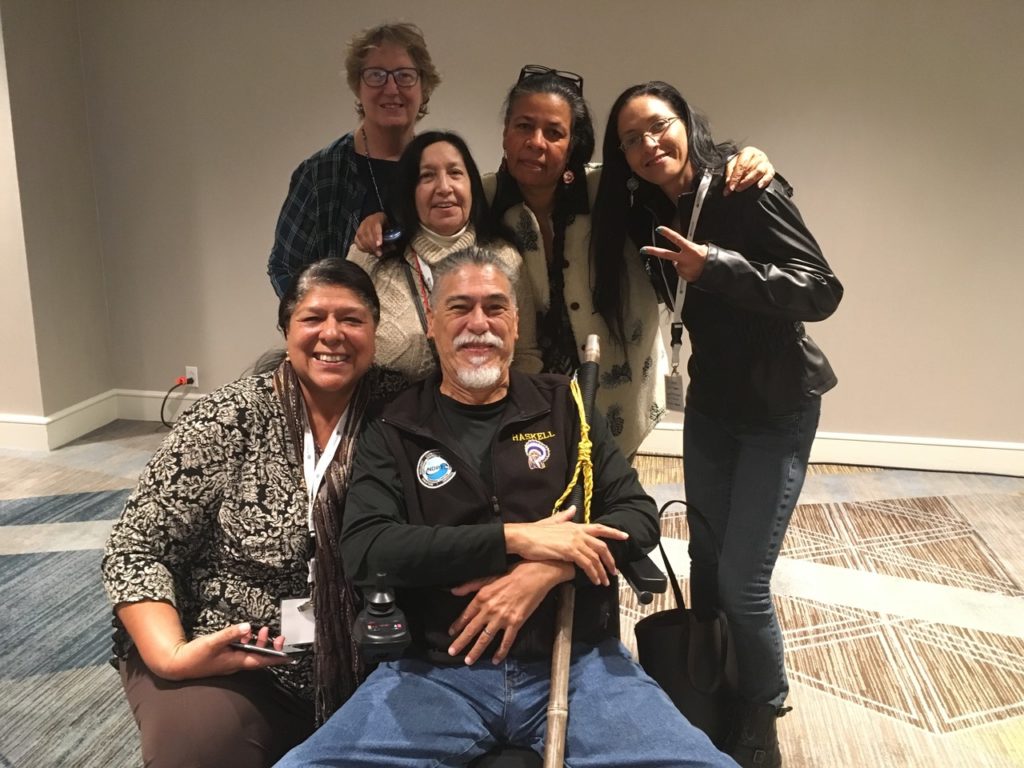The Unitarian Universalist Service Committee advances human rights through grassroots collaborations.
Climate Change in Louisiana

The state of Louisiana is located along the Gulf Coast of the United States. The Mississippi River runs from northwestern Louisiana down into the Gulf of Mexico. Historically, sediment washing down the river created a delta that comprises most of coastal Louisiana in the south. Gradual compacting of the sediment has resulted in an incremental sinking of the land around the delta at a rate of about one inch every three years. Human activities like the construction of levees have reduced the area’s natural land-building process through water overflows and re-sedimentation, and the state has been losing about 25 square miles annually. Other effects of human extraction—such as the leveling of cypress forests in the early 1900s for railroads and the subsequent 10,000 miles of canals dredged through wetlands for oil and gas—have had major impacts on the loss of land and its ability to repair itself.
Southern Louisiana and its islands face increased temperatures, extreme weather like tropical storms and hurricanes, rising sea levels, coastal erosion, and potential displacement of coastal communities. Louisiana was badly affected by Hurricane Katrina in 2005, which submerged most of the port city of New Orleans and devastated the region. The area has been hit with seven additional storm events of equal or greater impact, complicated by the devastation of the 2010 BP oil spill. In coming years, Louisiana expects more flood damage, reduced crop yields, and destruction of estuaries and fisheries from the changing climate.
A dead zone consisting of low-oxygen bottom water complicates nearby fisheries that also serve as a source of feeder fish for the Gulf of Mexico and Atlantic fisheries. Without the vital wetlands that act as the “kidneys” or filters for pollutants passing through the region from 36 states and two provinces, the Gulf is suffering from hypoxia—that is, oxygen deficiency in the environment. Various federal, state, and local government projects have attempted to slow the land loss process through the State Coastal Master Plan, which does not include indigenous knowledge or knowledge from the fisher community; nor does it provide for repair of canals dredged by oil and gas companies. The plan does not take into account the human dimensions of displacement that have resulted and will continue to result directly from human-made impacts.
Southern Louisiana’s tribal communities were once flourishing communities located inland from the coast along bayous or rivers. The tribes were as many as 50 miles inland from the Gulf of Mexico, but through the human development and industrial extraction that has destroyed the delta, the Gulf is now at the back door of each of these tribes.

Atakapa-Ishak Tribe
The Indigenous Atakapa-Ishak/Chawasha Tribe of southeastern Louisiana reside in Grand Bayou Village, in Plaquemines Parish, the southernmost parish of coastal Louisiana. Like neighboring communities, its people face sea level rise, land subsidence, and coastal erosion. These natural occurrences are heavily influenced by human-induced activities and interests such as oil and gas that has more than 10,000 miles of canals cutting the area’s wetlands and marshes. Access to the Grand Bayou Tribal Community is only possible by boat. Their land mass is the fastest-disappearing land on the coast.
Isle de Jean Charles Biloxi-Chitimacha-Choctaw Tribe
The Isle de Jean Charles (IDJC) Tribe historically was located on a narrow ridge of land on the Gulf Coast called Isle de Jean Charles. Land loss is the community’s primary concern, with families being forced from their traditional lands through multiple hazard events. Saltwater intrusion makes food cultivation difficult. Since 1955, IDJC has lost 98% of its land due to rising sea levels and erosion. The tribe has been trying to relocate for approximately 20 years and worked with the Lowlander Center to win a $52 million federal grant that went to the state for resettlement.
Pointe-au-Chien Indian Tribe
The Pointe-au-Chien Indian Tribe of approximately 680 people lives along Bayou Pointe-au-Chien, a Chitimacha village along the Gulf Coast of Louisiana. The community has long consisted of farmers, fishermen, and hunters. Its subsistence lifestyle involves hunting alligators, fishing, and catching shrimp, crabs, and oysters, but saltwater intrusion and land loss have made farming more difficult.